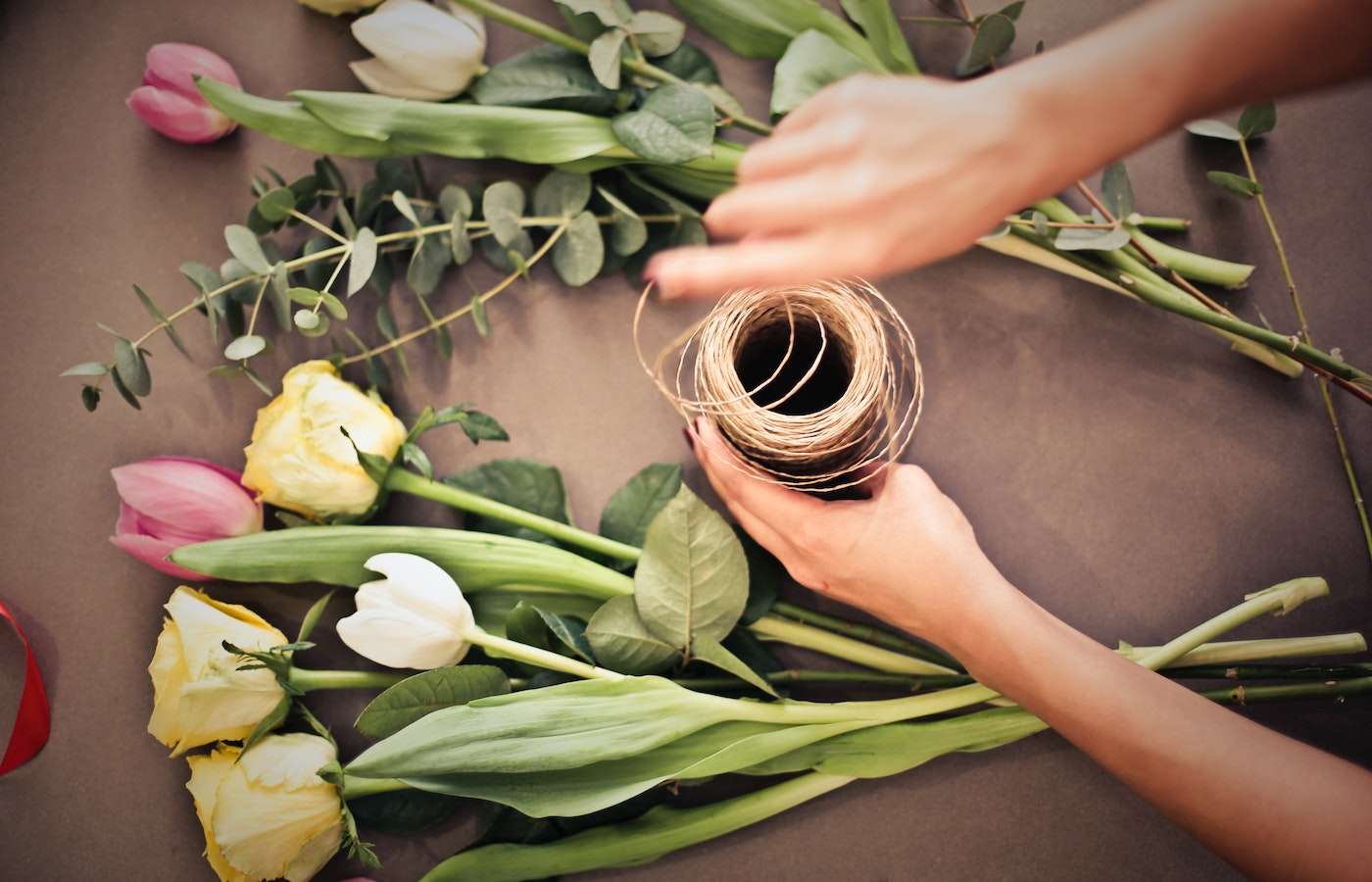What is floristry like as a job? What is the best way to become a florist? If questions like this are on your mind, read on, because in this series of Q&A interviews, professional florists will give you an inside look into their job, sharing insights such as what is the best way to learn the trade, what their biggest challenges are, how they got into the profession and other advice.
Q&A Interviews
Mark Pampling (Alstonville Florist)
With a passion for flowers that just keeps on growing, Mark Pampling has nurtured a multi-faceted career in floral design that includes working as co-owner of the New South Wales shop Alstonville Florist, providing instruction in floral design as a TAFE teacher, judging, demonstrating and consulting. Pampling has been awarded for his accomplishments as a multiple-time winner of the Interflora Australia Cup and has placed highly in a number of international competitions and exhibitions. He answers some questions here about his floristry education, how he balances his multiple roles and offers some tips for florists starting out.
How did you get your start in floral design?
Initially, when I first caught the flower “bug,” I was too old (22!) to get a traineeship or apprenticeship in a florist shop. I fell back on my previous training in hospitality and worked in that industry while I attended floristry classes and floral art lessons, training myself up to be proficient enough to be employable. Eventually, I landed a position in the one shop that I wanted to work in out of the eleven florist shops in my hometown.
Have you taken any floristry courses since then?
The learning never stops. No matter how much you learn, there’s always more to know. I’m always on the lookout for workshops and courses to enroll in, especially with designers who I admire, or events and projects to be a part of where I can learn from the design processes as they unfold. Structured or informal learning is a vital part of an ongoing career in floristry or any creative field.
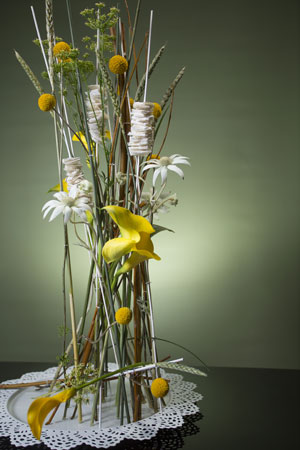
You mentioned both structured and informal learning. Do you feel either one of those is a better approach to learning floristry? If so, why?
Both ways of learning are great for floristry. I encourage people to experience both, especially if they want to develop their design consciousness. You can learn a lot informally on the job and through a hands-on approach. Backing this up with a solid (usually more structured) understanding of why you are doing what you’re doing is even better. This latter approach can provide a foundation of design theory which is a great tool for more advanced design exploration.
What do you like most about your job?
The never-ending fascination with the plant materials that we encounter each day and the joy of the moment when the elements and principles of design all come together into an “Ahhhhh” moment, either in my own work or when I see it in another design.
From co-owner of Alstonville Florist to teaching, demonstrating, judging and consulting, you wear a number of different hats. How do you find the variety of jobs helps you?
Each role gives me a different perspective that I can transfer across to the other roles. That opportunity to stand back and look at something from another, wider angle is often very beneficial. This benefit outweighs the challenge of narrowing my focus to just one role at a time when required.
Do you face any challenges from doing so much?
Finding time and space to allow my brain to stop thinking is a frequent challenge. Also, making time and space to be creative for the sake of it, not only for a specific event or project—simply creating and experimenting for the sake of it, and not just with flowers, is so enriching and valuable, and something I don’t do enough.
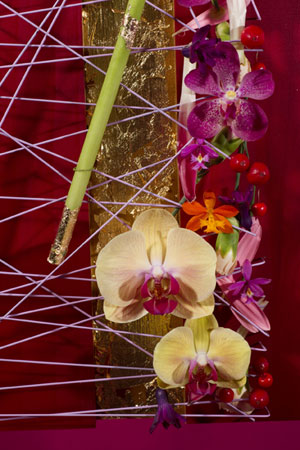
How did you get into teaching?
Teaching found me at first, within the first few years of starting in floristry. I was continually asked to share what I knew, and so I began to teach others through demonstrations and then workshops. Eventually I gained training qualifications and was able to deliver classes for accredited colleges.
What do you like most about teaching?
Teaching forces you to understand what you know and to find ways to share that knowledge so it can be easily absorbed. Teaching also makes you more aware of what you don’t know and stimulates curiosity about those unknown areas. I also enjoy the sharing of ideas and techniques with students and the mutual learning that occurs in that space.
What advice can you give to a florist starting out on how to best market themselves?
Make the time and the effort, even though it’s usually at the busiest or most inconvenient times, to keep photographic records of your work. You don’t need to be the world’s best photographer, but it’s good to know a little bit about taking photos and lighting (which also better equips you to choose the right professional for special projects).
Floral designs are ephemeral and transient, so keeping a visual record of your work is the best resource for promoting your abilities to potential employers, customers, clients or investors. Organizing, updating and sharing images of your work will reach a much larger audience than the number of people who will actually see your designs for themselves.
Any other general advice you can offer florists?
Always be open to learning more and make some clear decisions about what you want to do with your career.
images: Iain Brockwell
Kally Ellis (McQueens)
Kally Ellis set up McQueens in 1991 with the aim of selling simple, beautifully presented stylish flowers to the London market. It has since grown into a name recognized beyond London and beyond the UK. Stemming from its success selling flowers, McQueens opened up a school where it teaches students from around the world the McQueens philosophy. In this Q&A Ellis answers questions about working as a florist, drawn from her many years of experience.
What is your favorite aspect of floristry and why?
I can’t pick out any one aspect because they all work together—the design, the choosing of the flowers and vessels, the conditioning, the placement—it all works together. It’s a creative sequence toward a finale! Of course the reveal at the end is always incredible and gives a tremendous amount of satisfaction—seeing the end result and knowing that the client is happy is always the best feeling.
You once said in an interview, “I always say that you can teach anyone to be a florist, but you can’t teach people how to be creative…that comes from the heart.” For someone thinking of getting into floristry because they have a true passion for flowers, but don’t think of themselves as overly creative, do you think a love of flowers and a strong determination is enough to succeed as a florist?
I think that people often underestimate their own creativity—it’s very easy to dismiss—just because you cannot paint, draw or design doesn’t necessarily mean anything. Some people have creative vision or creative thinking that they don’t even recognize. I say come and do a course or get some work experience to give yourself time to develop.
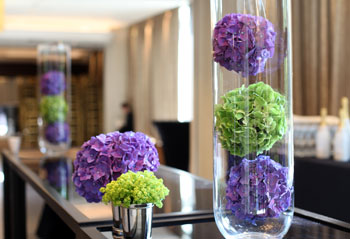
Often, people work in non-creative environments and are not able to release any creative energy, which can be stifling. For me, flowers are an art form and I look for creatives—many of the team have art degrees and training—they come to me free of bad habits. It’s important to stress that floristry is not just about being creative—it’s hard work, early starts, cold working conditions and it’s extremely physical. It’s not for the faint-hearted!
What inspired you to start a school in addition to your primary business?
It came about in a very natural and organic way. Our reputation started to spread globally and we received a lot of inquiries from Japanese would-be florists who wanted to understand the McQueens philosophy. We were doing a few private courses and the demand was there, so we opened the McQueens School 15 years ago and we now have students from all over the world. Students can come on four-week vocational courses or one or two courses that focus on specifics such as wedding flowers, focal arrangements, etc.
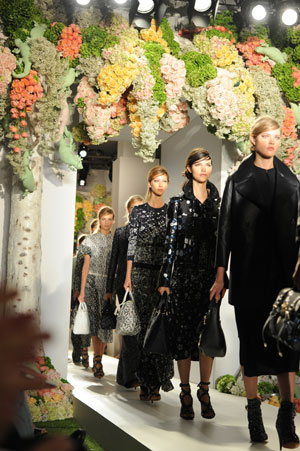
Do you have any favorite events you like working on?
The Vanity Fair post-Oscars party is a truly fabulous event and all of Hollywood A list are there—it’s quite surreal. The Mulberry Fashion Shows that are staged at Claridge’s Hotel are also wonderful to work on. The client always comes up with a magical brief and myself and the events team always look forward to coming up with a floral interpretation.
Any that you find particularly challenging?
I’ve been doing this now for 23 years, so I’ve become a great problem solver and lateral thinker. It’s always a challenge in terms of ensuring that the flowers are at their peak—when you’re working with a natural product there’s only so much control that you have. You have to be prepared for things not going to plan, but a calm head allows for success. Christmas is challenging for us because it’s so busy and we’re literally working round the clock.
Do you have any favorite designs that you’ve made?
The Christmas Tree at Claridge’s that I designed for them in 2012—it was such an honor to be asked. It got so much positive feedback and it was wonderful to think of my design in one of the world’s most iconic hotels.
What inspires your floral design?
Everything and anything. I’m a keen observer of life and art.
Georgianne Vinicombe (Monday Morning Flower and Balloon)
Selected as the WeddingWire Brides Choice and Best of the Knot several times, Georgianne Vinicombe knows how to deliver on her clients’ needs. She has been serving the public in New Jersey and Pennsylvania through her two Monday Morning Flower and Balloon Co shops for over 25 years. In this Q&A with The Florist Guide she lets us in on some of the secrets of her success from social media to cross marketing.
How did you get your start in floristry?
I did not set out to be a florist, not to mention owning a full service retail floral shop. I was running a business that I had founded that was not very “creative” and I was looking for something a bit more challenging to do one day per week. Monday Morning Flowers was born and our focus was on providing small floral arrangements (bud vases) to small offices that wanted weekly flowers (on Monday mornings) but were not being serviced by full service floral design studios. I called this “flowers by subscription” and folks could buy a month, three months, etc. and have fresh flowers delivered for their reception desks each Monday.
Not being one to stand still for long, I became interested in balloon décor (this was 1988-1990) and so started to teach myself how to create arches and centerpieces using balloons. Typically, this was weekend work and so I started offering this service, hence the name change from Monday Morning Flower Co to Monday Morning Flower and Balloon Co. To this day we inflate over 35,000 balloons and of course, are a full service florist as well.
What is the most satisfying part of the job for you?
Interaction with customers, being surrounded by beautiful flowers and the “retail” end of our business. I love merchandising and looking for new products to offer. I especially love anything to do with marketing and social media (social networking) not to mention how two days are never the same—all combine to keep me interested and challenged in my business.
And the most challenging?
I think I’d have to say dealing with employees. I love leading and innovating, but I strongly dislike the day to day “managing and follow up” that has to happen when you manage a team of individuals.
For the busy florist trying to balance all the roles required in running a shop, what would you suggest as the best way to market yourself?
I believe in “romancing the customer.” It truly is all about them. If you understand and meet their needs, they will come back and they will tell their friends. Running a professional organization with policies and procedures can make you unpopular with your employees, especially your designers, but the consumer deserves consistent service year after year.
Holding staff accountable for their work and sharing expectations is the only way to build a consistently good floral brand. Once you have that in place, you can go out and market yourself to the world! My favorite marketing right now are all aspects of social media (social networking). Cross marketing with other businesses and putting as much about yourself online (to help with organic searches) as possible costs little but the rewards are huge. Lastly, nothing big can be achieved without a great website. An updated and current website that is customized as much as possible is a must.
Can you give me a couple of examples of some effective cross marketing that you’ve done?

We cross-market with the Trenton Thunder Ballpark. We provide them with flower and balloons when they need it and they give us signage throughout the ballpark, tickets to give out, etc. They mention us, we mention them and it puts us in front of thousands of customers from our area.
How have you found your YouTube videos have helped your business?
I do have a YouTube channel and regularly post videos here. I do feel that it has helped our business. I’d love to say that I know exactly how much revenue it generates each year but truthfully, I don’t. I just know it’s a great way to market your business by sharing and educating the public. I specifically use it as a tool to get weddings, to highlight our product line and market for the holiday season.
How much video production experience did you have when you started up your YouTube channel?
It’s funny that you ask that because my first year of college was spent as a communication major and my goal at that time was to go into TV production. After a year of that, I decided it was a very difficult path to pursue and changed my major to business.
I still feel that I have an eye for “framing” and I still see things as though I’m looking through the lens and am pretty comfortable in front of the camera (as a TV production major in 1981 and a woman, they were more likely to put me in front of the camera than in the editing room or behind the camera, much to my frustration).
OK, enough of my early college days; I really had no video production experience and if you look at the videos I currently have posted, most are made in a very simple and straightforward manner. I’m more likely to sit at my desk in front of my webcam and talk into the computer, starting and stopping manually and creating the video in one take. I sometimes use my Flip Video camera and I love making videos of products and past weddings using Animoto, which is a very easy tool to create slideshow-like videos set to music. No skill required!
How long does it take to film and upload your average YouTube video?
It would be very rare for me to take longer than 30 minutes to create and upload a video. Talk about keeping it simple! My videos look “home made” and they really are. In the future, I’d love to learn an editing package, but I don’t see myself making time for that in the near future.
How has your Facebook page been of benefit?
Oh gosh yes, I can’t imagine not having Facebook as a tool. I may not be able to quote exactly how much business comes from Facebook, but even five years later, I still spend a significant amount of time on our Facebook pages (we have two stores, each with a page).
If a florist only had time to handle one social media platform, which would you suggest?
It would have to be Facebook, hands down. Facebook is the way to go.
Visit Monday Morning Flowers and Balloon online through their website, YouTube channel and Facebook pages.
